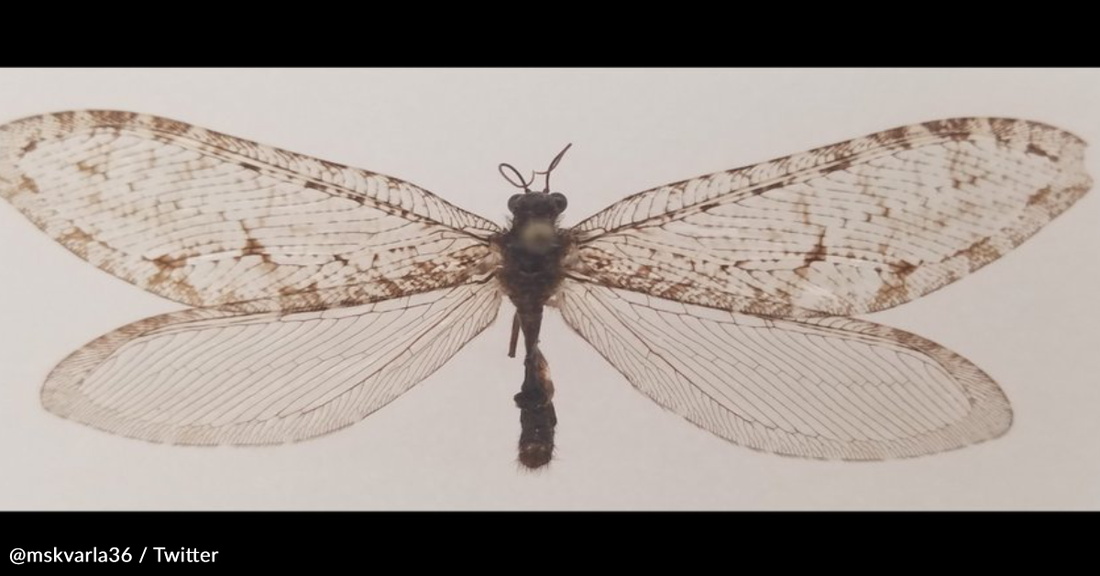Man Finds Rare Jurassic-Era Insect Outside Arkansas Walmart
Malorie Thompson
It's not every day a new insect discovery is made, but this one was a decade in the making.
When an entomology major walked into his local Arkansas Walmart years ago, he noticed an insect that really caught his eye. While he didn't think too much of it, he decided to catch it for further study just for fun.
According to a press release from Pennsylvania State University, Michael Skvarla discovered the insect back in 2012 when he was studying to get his doctoral degree at the University of Arkansas, but it wasn't until 2020 that he realized he'd really found something special.
He said in the press release, "I remember it vividly, because I was walking into Walmart to get milk and I saw this huge insect on the side of the building. I thought it looked interesting, so I put it in my hand and did the rest of my shopping with it between my fingers. I got home, mounted it, and promptly forgot about it for almost a decade."
Per the release, Skvarla was teaching a course in 2020 based on his personal insect collection when he began to realize that the specimen didn't appear to be an antlion like he'd first assumed.
An antlion looks slightly different, though an untrained eye could easily mistake the two. Check out the antlion below:
Instead, it appeared to be a giant lacewing dating back to the Jurassic period!
Skvarla tweeted a photo of the specimen so you can see it for yourself:
https://twitter.com/mskvarla36/status/1631128694776377344
The exciting discovery was officially confirmed through DNA testing. Since the confirmation, the specimen was moved to the Frost Entomological Museum at Penn State where it can be used for further research and education.
According to the Penn State press release, the species was once widespread throughout North America but it mysteriously disappeared around the 1950s. The discovery of the specimen reveals there may be undiscovered populations of giant lacewings not yet known to science.
The giant lacewing found in Arkansas back in 2012 was the first spotted specimen in eastern North America in over 50 years. It's speculated that the individual could be part of a "rare, surviving eastern population of giant lacewings that evaded detection and extinction."

 Photo:
Photo:  Photo:
Photo:  Photo:
Photo: 
